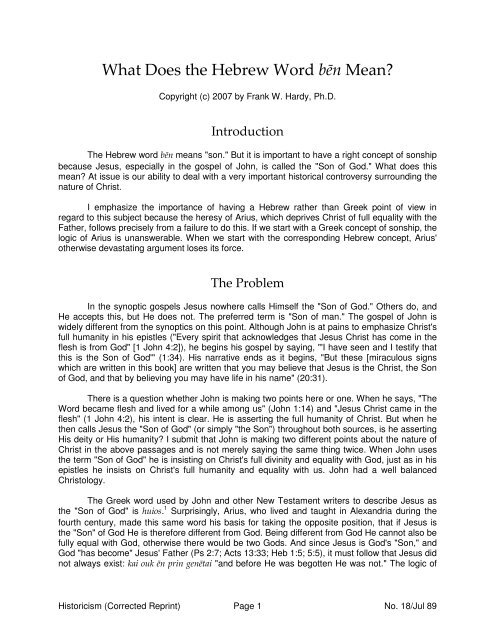
BH /ʕ/ and /ʔ/ have usually merged into SIH /ʔ/, but this distinction may also be upheld in educated speech of many Sephardim and some Ashkenazim. BH /t/ and /tˤ/ have merged into SIH /t/. BH /k/ had two allophones, and the allophone has merged with /q/ into SIH /k/, while the allophone has merged with /ħ/ into SIH /χ/. BH /b/ had two allophones, and the allophone has merged with /w/ into SIH /v/. Standard (non-Oriental) Israeli Hebrew (SIH) has undergone a number of splits and mergers in its development from Biblical Hebrew. (The remnants of this pronunciation are found throughout the Ashkenazi world, in the name "Yankl" and "Yanki", diminutive forms of Jacob, Heb. Western European Sephardim and Dutch Ashkenazim traditionally pronounce it (like ng in sing)- a pronunciation which can also be found in the Italian tradition and, historically, in south-west Germany. Georgian Jews pronounce it as a glottalized q. Most modern Ashkenazi Jews do not differentiate between א and ע however, Mizrahi Jews and Arabs pronounce these phonemes. ע was once pronounced as a voiced pharyngeal fricative. In Modern Hebrew, however, all six sounds are phonemic, due to mergers involving formerly distinct sounds (/v/ merging with /w/, /k/ merging with /q/, /x/ merging with /ħ/), loss of consonant gemination (which formerly distinguished the stop members of the pairs from the fricatives when intervocalic), and the introduction of syllable-initial /f/ through foreign borrowings. The pairs /b, v/, /k, x/ and /p, f/ have historically been allophonic, as a consequence of the phenomenon of spirantization known as " begadkefat". The following table lists the Hebrew consonants and their pronunciation in IPA transcription: The Hebrew word for consonants is ‘itsurim (עיצורים). For this reason, Hebrew has been referred to by Jews as Leshon Hakodesh (לשון הקדש), "the Holy Language", since ancient times. The Torah (the first five books), and most of the rest of the Hebrew Bible, is written in Biblical Hebrew, with much of its present form specifically in the dialect that scholars believe flourished around the 6th century BCE, around the time of the Babylonian captivity. As a foreign language, it is studied mostly by Jews and students of Judaism and Israel, and by archaeologists and linguists specializing in the Middle East and its civilizations, as well as by theologians in Christian seminaries. Ancient Hebrew is also the liturgical tongue of the Samaritans, while modern Hebrew or Arabic is their vernacular. Modern Hebrew is one of the two official languages of Israel (the other being Modern Standard Arabic), while premodern Hebrew is used for prayer or study in Jewish communities around the world today. The United States has the second largest Hebrew speaking population, with 220,000 fluent speakers, mostly from Israel. Then, in the 19th century, it was revived as a spoken and literary language, and, according to Ethnologue, had become, as of 1998, the language of 5 million people worldwide. It survived into the medieval period as the language of Jewish liturgy, rabbinic literature, intra-Jewish commerce, and poetry. Aramaic and to a lesser extent Greek were already in use as international languages, especially among elites and immigrants. Hebrew had ceased to be an everyday spoken language somewhere between 200 and 400 CE, declining since the aftermath of the Bar Kokhba revolt. Today, Hebrew is spoken by a total of 9 million people worldwide. The earliest examples of written Paleo-Hebrew date from the 10th century BCE. 

Later Hellenistic writers such as Josephus and the Gospel of John used the term Hebraisti to refer to both Hebrew and Aramaic.


Historically, it is regarded as the language of the Israelites and their ancestors, although the language was not referred to by the name Hebrew in the Tanakh. However, we left off with a second explanation for why an interruption sets off a requirement to recite a new Brocha.Hebrew (ˈhiːbruː Hebrew:עברית ʿivrit is a West Semitic language of the Afroasiatic language family. Any suggestions will be greatly appreciated.
#Hebrew word for right code#
Clearly, there is some embedded code in the document that I'm working with that is a problem, but I don't know where/what. Any thoughts as to why the word order would become reversed in a different document? BTW, if I copy-paste the text from the document where the words are out of order into anotherĭocument, then the word order appears correctly. However, when I copy-paste to the new document the Hebrew words become reversed (not letter reversed,īelow is the text that I am copy-pasting. The right-to-left (Hebrew) words are in their proper order in the original document. I am doing some copy-paste from various documents into a central document.








 0 kommentar(er)
0 kommentar(er)
